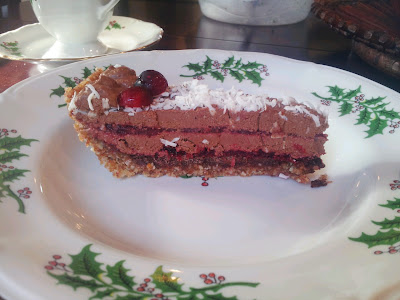For my birthday last year, my amazing (and vegan, thanks to yours truly!) mother gifted me my very own and very first dehydrator! Thanks to my raw food obsession, this bad boy has come in pretty handy. I've made the incredible and addicting kale chip, I've made pizza, cookies, wraps, even sweet potato dog treats in my dehydrator. Well, I was totally stoked when I made my first batch of flax crackers! They were so incredibly delicious, easy to make, and perfect for snacking with dips that I fell in love with my first bite! So now, in the spirit of passing it forward and universal love, I gift this recipe to you all. If you don't have a dehydrator, I suggest baking them in the oven. They won't be raw but they will be much better for you than traditional chips that are loaded with fat and sodium. If you do have a dehydrator, than I can guarantee perfection with this recipe. Enjoy! Oh, and don't forget that you can mix it up with this recipe. Flax seeds don't have a lot of flavor on their own so go ahead and add your favorite herbs and spices to create new versions. I've used a mix of garlic salt, cumin and dried cilantro with a pinch of lime juice to make a flax "tortilla" chip to go with guacamole!
Flax Crackers Ingredients:
- 1 cup whole, raw flaxseeds
- 1 cup water
- 1 tsp. garlic salt (option to use sea salt instead)
- 1 tsp. dried basil (or your favorite herb)
- Add flax seeds, salt, and basil to a medium-sized bowl and toss to mix. Add the water and stir well. Set aside for 5-10 minutes. Flax seeds form a gel around the outside of the seed when they are wet. This gel is what will hold the cracker together.
- Take a lined tray from your dehydrator and use a spoon to scoop the batter onto the tray in cracker sized circles. Remember, what you see is what you get so make them the size that you want. I've made little bite-sized crackers and larger crackers for spreading raw cheezes on, both are great! Dehydrate for about 8 hours.
Vegetable Pate Ingredients:
- 1 cup raw almonds
- 1 Tbsp. grated ginger
- 2 cloves garlic
- 1 tsp. sea salt
- 3 carrots, chopped
- 2 stalks celery, chopped
- 1/4 cup onion, chopped
- 2 Tbsp. extra virgin olive oil
- 1 Tbsp. fresh lemon juice
Vegetable Pate Method:
- Using a food processor fitted with "S-type" blade, process almond into a flour and set aside.
- Add garlic, ginger and sea salt and process a few beats. Then add the carrots, celery, onion, olive oil, and lemon juice and pulse till you have the desired consistency. I pulse until it is hummus like for a dip but a pulse until everything is in little pieces if I am going to put it in a wrap.
To make a wrap, take a large collard leaf and lay dark side down. Shave the stem so that it is flush with the leaf. This will allow the leaf to bend and wrap without breaking. Add some pate, veggies, lettuce and herbs (or whatever you have on hand) then wrap it up like a burrito.
I had this for lunch yesterday and it was incredible! If you've never had a collard wrap before (I promise to make a how-to on collard wrapping soon) then you are in for a treat! Collard greens are full of vitamins and iron and they pack a powerful punch of energy! I had mine before I went out for a hike in a park by my house called Fish Creek park.
Last night I had a really great time going out to Seattle to attend my friends book launch! His name is Gyasi Ross and he wrote a really touching and insightful book called, How to Say I Love You in Indian. I highly recommend reading his book because as a non-native it really opened my eyes to a new perspective about life, love and family. Here are a few pics from last night:
Great Words
Great Art
and selfies on the ferry ride home from Seattle :)
Thank you so much for stopping by the Venturing Vegan blog today!! Don't forget that viewer comment are like blog cash tips! I love hearing from you guys!
xoxo,
VV











































